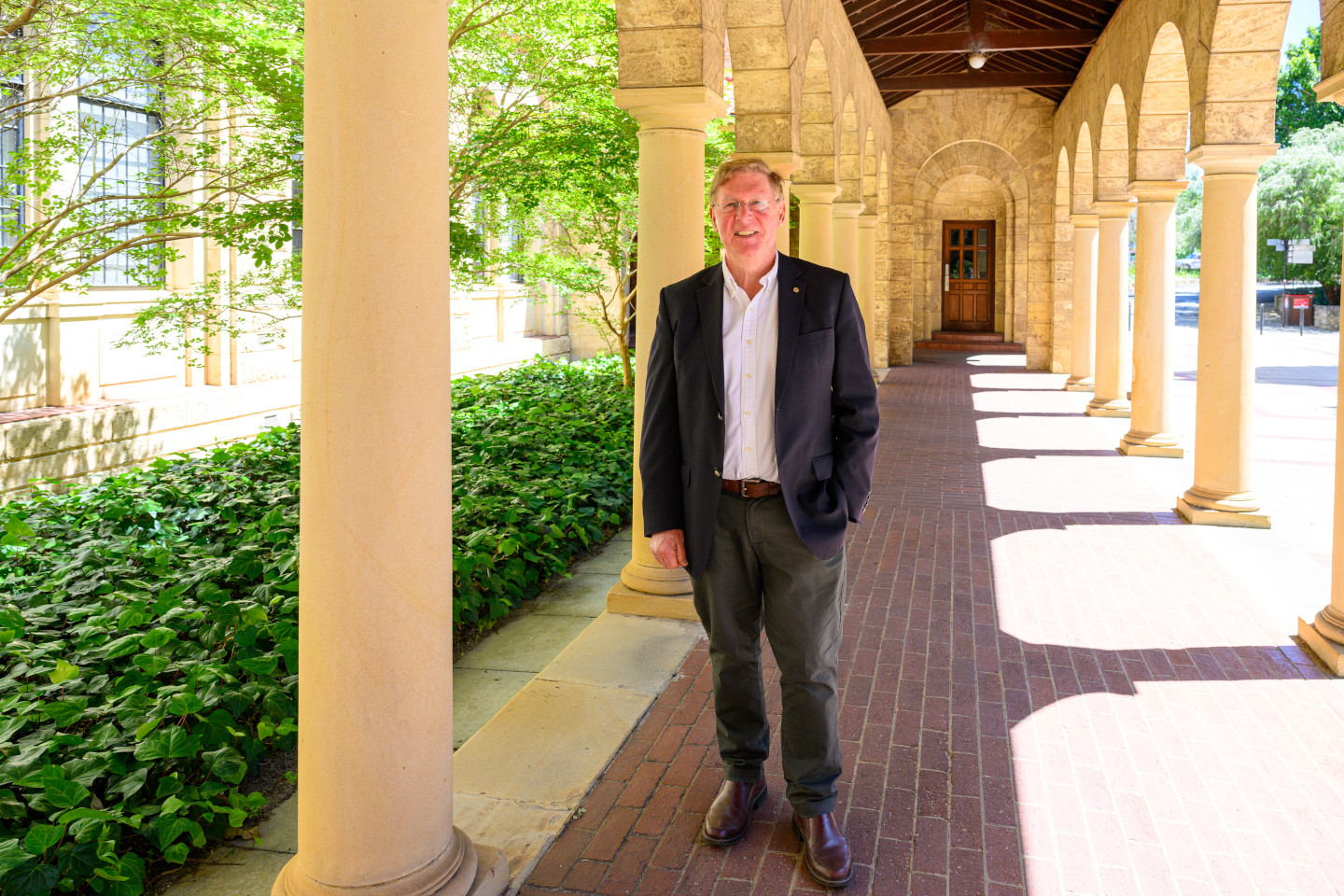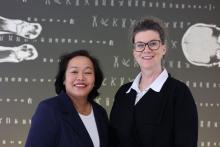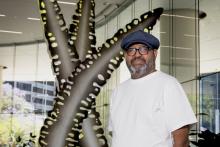Limitless: WA could become a globally significant supercomputing hub on the back of the $3 billion Square Kilometre Array development.


THE turning of the first sod for construction of the world’s largest radio telescope marked the culmination of 15 years’ work for Peter Quinn.
As Professor Quinn’s sees it, the $3 billion Square Kilometre Array project in Western Australia’s Murchison region is just another step in developing the science of radio astronomy.
In his new role as executive director of research initiatives in astronomy, space and data at The University of Western Australia, Professor Quinn has set his sights on establishing the international capacity to process the streams of information that will flow from the telescope.
Site assembly is set to get under way within weeks, after the federal and state governments signed a land-use agreement with the local Indigenous community, the Wajarri Yamatji people, in November.
More than 130,000 antennas will be installed in a radio quiet zone in the desert.
In aggregate and combined with the South African leg of the SKA project, the telescope will be substantially more powerful than any built before.
That means it will be able to see further into space (and back into time) than any of its predecessors.
Australia had previously struggled to retain talented astronomers due to a lack of infrastructure or suitable locations for a telescope.
When the SKA project was presented to Professor Quinn, however, he had no doubts about his decision to be involved.
“A once-in-a-career, Apollo-like opportunity,” he said.
“It’s about 3,000 times more capable than anything we have today.
“In one generation of scientists, in one lifetime.
“It’s pretty spectacular.”
SKA in WA
131,072 antennas with a 400,000sqm collection area
65,000 fibre optic cables to link antennas with site supercomputer
8 terabits per second of data transferred to Perth
1991 SKA first proposed
2012 Australia and South Africa picked as hubs
Professor Quinn led the International Centre of Radio Astronomy Research (ICRAR) in Perth from 2009 to 2022, with the team multiplying from 10 staff to 200 over those years.
He played a key role in progressing the SKA from an idea to a reality, overcoming technological hurdles and securing international backing.
That required proponents to bring together more than a dozen countries into the SKA’s organisation, established by international treaty.
Developing the framework for the process took more than 25 years, from commissioning the project’s first international working group to the day the treaty was signed in Rome, in March 2019.
Australia’s role hosting half the international project was far from guaranteed, however.
Argentina and China made early bids for the facility, while South Africa initially emerged ahead of WA as the choice locale.
Two precursor telescopes were built in WA: the Murchison Widefield Array and the Australian SKA Pathfinder.
The success of those telescopes helped Australia eventually draw support to build one of two SKA cores, as did the capability of the Murchison to deliver a radio-quiet zone.
Professor Quinn said the telescopes had generated fantastic scientific discoveries and blazed a trail in technology.
The Pathfinder telescope pioneered a new method to survey the skies faster, using widefield imaging receivers.
Back in Perth, ICRAR played a role in developing software and hardware for the precursor telescopes, including the two in South Africa; innovations that could have an impact beyond astronomy.
When large fluctuation in hot and cold weather risked distorting signals in fibre optic cables linking the South African telescopes, researchers in WA worked to find a solution.
That same science could correct the laser beams through the atmosphere and increase the bandwidth of laser data systems by 1,000-fold, Professor Quinn said, improving the capacity of low Earth orbit satellites.

Installation of prototype antennas for SKA in Murchison. Photo: ICRAR
Switching on
WA’s array of antennas will be installed in phases.
The first batch should be completed by 2026, Professor Quinn said, while the remainder should be on site by the end of the decade.
The antennas will be switched on as the development progresses.
The system will create an enormous amount of data.
“The data repository that goes along with the SKA … [requires] data centres which are extremely large, Google- and Amazon-class data centres,” Professor Quinn said.
At full output, he estimates the SKA will produce 1 exabyte of data per year.
That’s about a quarter of the amount of data downloaded by the whole of Australia in the June quarter of 2018 (the most recent number published by the Australian Bureau of Statistics).
Processing and storing this will require a distributed, global supercomputing network, establishment of which forms part of Professor Quinn’s new executive director role at UWA.
“Perth will be one of the major supercomputing centres in the world,” he said.
It will require at least 10 times the supercomputing power already available in the state.
In fact, recent SKA simulation work called for use of the world’s biggest such computer at Oak Ridge National Laboratory in the US, the first built with exabyte capacity.
ASX-listed DUG Technology has proposed building a renewable-powered high-capacity computer near Geraldton, where it would be available to play a role in processing SKA data.
Professor Quinn believes it will take 10 years to put together the global network to process the data.
But he said WA’s role would bring community benefits, including attracting bright minds to the state and advancing skills in data science, machine learning and artificial intelligence.
“That’s going to be another opportunity for kids, and the supercomputing industry, to be involved,” Professor Quinn said.

















